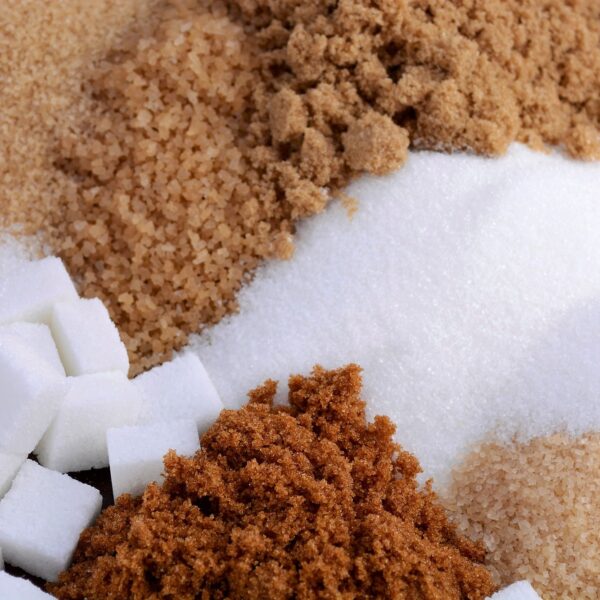
As a society, we consume a lot of sugar. The average American consumes about 17 teaspoons of added sugars per day, according to the American Heart Association. This is far more than the recommended daily limit of 6 teaspoons for women and 9 teaspoons for men. While sugar is a natural part of many foods, consuming too much added sugar can lead to a range of health problems, including obesity, type 2 diabetes, and heart disease.
Two of the most common simple sugars are glucose and fructose. In this article, we’ll take a closer look at these two sugars, their differences, and their impact on health.
Glucose
Glucose is the primary source of energy for the body’s cells. It is found in many types of foods, including bread, pasta, and potatoes. Glucose is also the main sugar found in the bloodstream, which means it is the most readily available source of energy for the body.
When we consume glucose, it is quickly absorbed into the bloodstream and triggers the release of insulin from the pancreas. Insulin helps transport the glucose into cells for energy. This process keeps our blood sugar levels in a healthy range and provides our bodies with the energy we need to function.
While glucose is an essential nutrient, consuming too much of it can lead to health problems. High intakes of refined carbohydrates, such as white bread and sugary drinks, can cause blood sugar levels to spike and lead to insulin resistance over time. Insulin resistance is a condition where the body’s cells become less responsive to insulin, which can lead to type 2 diabetes and other health problems.
Fructose

Fructose is another simple sugar that is found naturally in fruits, vegetables, and honey. It is also used as a sweetener in many processed foods and beverages. Fructose is metabolized differently than glucose, primarily in the liver, and is converted into glucose, glycogen, or fat for storage.
One of the main differences between glucose and fructose is how they affect insulin and blood sugar levels. Unlike glucose, which triggers the release of insulin from the pancreas, fructose does not stimulate insulin release in the same way. This can lead to higher levels of blood sugar and insulin resistance over time.
Studies have linked high fructose intake to an increased risk of obesity, type 2 diabetes, and other health problems, such as non-alcoholic fatty liver disease. Excess fructose consumption can also contribute to inflammation, which is linked to many chronic diseases.

High fructose corn syrup (HFCS) is a sweetener that is commonly used in many processed foods and beverages. It is made from corn starch, which is broken down into glucose molecules through a process called enzymatic hydrolysis. Then, some of the glucose is converted into fructose using another enzyme called glucose isomerase. The resulting syrup contains varying amounts of fructose, usually around 42-55%.
Once consumed, the body processes fructose differently than glucose. Unlike glucose, which can be used by almost all cells in the body for energy, fructose is primarily metabolized in the liver. The liver converts fructose into glucose, which can be used by the body for energy or stored as glycogen in the liver or muscles. However, if the liver is overwhelmed with fructose, excess fructose is converted into fat, which can lead to the development of non-alcoholic fatty liver disease (NAFLD) and other health problems.
It’s worth noting that not all sources of fructose are created equal. Whole fruits and vegetables, which naturally contain fructose, also provide important nutrients, fiber, and antioxidants that are beneficial for health. In contrast, processed foods and beverages that contain HFCS and other added sugars often lack these beneficial nutrients and can contribute to overconsumption of calories and weight gain.
While some research suggests that HFCS is no worse for health than other types of added sugars, it is important to keep in mind that HFCS is often found in highly processed foods and beverages that are also high in calories, unhealthy fats, and sodium. Consuming too much of these types of foods can lead to a range of health problems, regardless of the type of sugar used.
Consuming too much added sugar, whether in the form of glucose, fructose, or high fructose corn syrup (HFCS), can lead to a range of health problems. Some of these health problems include:
- Obesity: Consuming too much added sugar can lead to weight gain and obesity. Excess weight is associated with a range of health problems, including type 2 diabetes, heart disease, and certain cancers.
- Type 2 diabetes: Consuming too much sugar can lead to insulin resistance, which can contribute to the development of type 2 diabetes.
- Heart disease: Consuming too much sugar can lead to high levels of triglycerides, a type of fat in the blood, which can increase the risk of heart disease.
- Non-alcoholic fatty liver disease (NAFLD): Consuming too much fructose, particularly from sources like HFCS, can contribute to the development of NAFLD, a condition where fat accumulates in the liver.
- Dental problems: Consuming too much sugar can lead to dental cavities and other dental problems.
- Inflammation: Consuming too much sugar can contribute to chronic inflammation, which is linked to many chronic diseases, including heart disease, cancer, and Alzheimer’s disease.
Understanding the differences between glucose and fructose and their impact on health can help us make more informed decisions about the foods and beverages we consume. While both glucose and fructose are important sources of energy for the body, consuming too much added sugar, especially from highly processed foods and beverages, can lead to a range of health problems. To promote optimal health, it’s important to focus on a balanced diet that includes whole, nutrient-dense foods and limits intake of added sugars and highly processed foods.


Leave a Comment